Introduction
Early African arts have some of the most diverse collections in the world. This is because African continent has societies, people, and civilization with diverse cultures. Styles also differ depending on the origin of the art. However, some pieces of art materials have common trends to indicate their regions of origin.
For instance, sculpture is common among many societies. Images of deities or kingships are not common. However, there were masks for such religious rituals. Such masks had naturalistic depiction of the cultures and societies.
Early African art also influenced art in other parts of the world. The notion that Africa is the cradle of humankind is strong and exists among many cultures. These pieces of arts existed before the periods of written history. Hence, pieces of artworks have many centuries.
This essay looks at the rock or wall painting and terracotta sculptures, cast, carved, and modeled arts of Igbo, Ife, and Yoruba. In addition, it also covers images of rituals and kingship of Benin arts.
Early art of Africa rock wall painting and terracotta sculpture
Rock arts and wall paintings are the earliest forms of art in Africa. History puts it that Africa is the origin of human. From this view, some scholars argue that Africa has some of the oldest and greatest forms of rock and wall arts in the world (Borgatti and Brilliant 28).
The oldest rock art is in Namibia. It dates back between 24,000 and 27,000 years ago. However, some experts claim that African rock may date back to over 50,000 years ago (Evans 1).
The earliest rock art was in “Niger protected under the Saharan sands” (Evans 1). It dated back to 6,500 BC. These were the carvings called petroglyphs. They represent animals looking like giraffes, which are no longer available in that area (see fig. 1).
These images show us the ancient ways of life among various tribes (Stokstad and Cothren 7). Such paintings allow us to gain insights into their “thoughts, physical environments, spiritual practices, and others” (Evans 1).
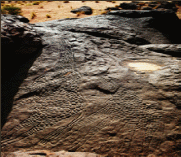
Figure 1: Giraffe engraving, Niger, 6,500 BC
Most of these ancient arts face destruction from natural actions due to civilization and other forms of human actions like graffiti on the walls or rocks. These acts deface the painting.
West Africa has some of the richest and well-known terracotta sculptures in the world (see fig. 2& 3). For instance, Nigeria gained recognition from its terracotta sculptures. Some of this figures date back to 5th century BC.
Terracotta sculptures are the longest surviving work of arts in the African continent. These pieces of arts were resistant to termites and other forms of destruction. These pieces of arts have consistency in their production. Even the production of today has similar features to those of the ancient times (Department of Arts of Africa, Oceania, and the Americas 1).
The earliest surviving terracotta figurines are “from Nok culture of Nigeria” (Evans 1). Some of them date back from 500 BC to 200 AD. Most of these figurines are small and usually found broken.
However, they have rich clay and grog. They show strong figural depiction of African culture in the ancient time. Terracotta figures have rich expressive qualities, which place them as the foundation of the sculptural works. They demonstrate prominent heads and hairstyles between male and female figurines.
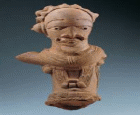
Figure 2: Nok male figure, Northern Nigeria 500BC – AD500 (The Metropolitan Museum of Art)
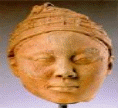
Figure 3: Ife terracotta queen with elaborate headdress 1000-1300 AD (The Metropolitan Museum of Art)
Nok terracotta figurines remain valuable in history of African arts. The discoveries of terracotta in Ife showed figurines that dated back to 1000 AD in history.
The original function of terracotta figurine remains unknown to present. However, some theorists claim that these figurines served purposes of marking graves, portraying ancestors, and charming to prevent misfortune like infertility, crop failure, and illness. Others also argued that their dome-shaped bases indicated that they acted as finials in roofing for early structures.
Cast, carved and modeled: Igbo and Ife Yoruba art
The artworks of cast metals survived the Africa’s termites. The bronze arts date back to “9th century AD among the Igbo of Nigeria” (Blier 78). Igbo also has other pieces of arts apart from bronze. The Ife people of Nigeria developed fine pieces of brass and bronze castings during the 12th century through to 15th century (Blier 78).
These pieces of artworks marked the quality of African arts. Some of these pieces have pure copper, which were difficult to cast than brass. The Yoruba people molded heads from bronze as early as 15th century. Artists developed these pieces of arts for kings and for magical purposes. This showed ancient beliefs and sociopolitical structures and chiefdom. These existed under Ife or divine king (see fig. 4).
The Ife art developed between 12th and 16th century. In this period, Nok art was not sufficiently developed. Ife art was extraordinary because many scholars could not find suitable explanation to it. Thus, they resorted to Greek or Egyptian influences in order to explain the artwork.
This was because none of the discoveries in the region resembled Ife arts. However, subsequent discoveries revealed African influences based on the stressed features of the head against the rest of the body. This highlighted how far the work was far from European influence.
Ife is responsible for most the Yoruba myths. This explains why deities influenced most artworks in the region.
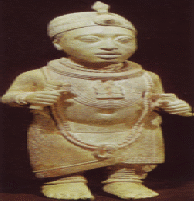
Figure 4: Brass figure Oni (King) of Ife 14th to 15th C (National Museum, Lagos)
It is almost impossible to associate the beginning of Ife arts with a specific date. However, studies indicate that the work started long before 1200 AD. During 15th century, Benin kingdom gained recognition for its bronze, which was significant in the production of artworks (see fig. 5). Thus, it is proper to conclude that Ife art reached its peak in before 15th century.
Some of Ife arts had copper carvings. Some local communities worshiped these pieces of art along the Niger River. The exact origins of Tsoede bronzes remain unknown. Further examinations for alloys have revealed that these artworks existed long before Europeans reached Africa. Some of these alloys had copper and tin.
The arrival of Portuguese changed arts in Ife as sculptors created brass plaques, which served as decorations in the royal palace.
Some scholars observe that African artists preferred three-dimensional pieces of arts rather than two-dimensional works (Blier 89). Thus, people had to view such pieces of arts carefully in order to experience them fully.
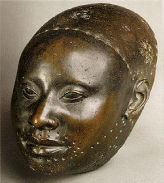
Figure 5: Yoruba bronze head sculpture, Ife, Nigeria c. 12th century A.D. (National Museum, Lagos)
Images of ritual and kingship: Benin art
Benin images of kingship and rituals reflect magnificent and sophisticated artworks. These pieces reflect some of the most acclaimed works of art in the African continent. The rich artistic heritages of Benin arts are in forms of kings and rituals (see fig. 6).
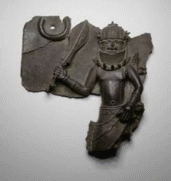
Figure 6: Edo Benin Kingdom, Nigeria Plaque of a War Chief, 16th or 17th century, Brass (Samuel P. Avery Fund, 1933.782)
Scholarly studies have confirmed the importance of the divine king (oba) in Benin kingdom (Blier 91). Thus, most artistic works portrayed the divine nature of the king. According to records of important historical features, the divine king interacted with the supernatural. Thus, artworks had to capture and honor the divine king with deities as means of creating contacts with ancestors in order to enhance continuity of the kingdom.
Most of the materials in Benin arts consisted of brass, coral, and ivory. These materials had sacred power from gods. These pieces of artworks had value based on skills and period. They highlighted both earthly and other beliefs in the divine kingdom as well as the wealth of the kingdom.
Benin kingdom and ritual arts reflect rich tradition that highlights great creativity among sculptors of the time (see fig. 7). People relied on such pieces of arts in order to provide history and interpretations of the kingdom. Interpretations helped rulers established contacts with the past and forge a future with supports and blessings from the past as they defined their roles to prosperity (Amos 102).
We can rely on these pieces of arts when tracing the history of Benin Kingdom. Studies have established credible links from 13th century through to 15th century during the arrival of Portuguese and the growth of wealth in the kingdom from coastal trade. From these pieces of artworks, we can establish rituals, kingship, and hierarchy in the kingdom.
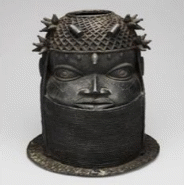
Figure 7: Altar Head of an Oba (Uhunmwun Elao), 18th/early 19th century. Edo; Benin Kingdom, Nigeria (The Art Institute of Chicago, Major Acquisitions Centennial Endowment, 2003.16)
Impacts on the modern arts
Early in 20th century, many artists such as Matisse, Picasso, and Derain among other took interests in early African artworks (Richardson 18). They visited many museums across the world to view African arts. They observed formal perfection, abstraction, and complicated designs of the primitive artists. Such remarkable artworks draw emotion, imagination, and create impressive encounter of the African spiritual world.
The African arts changed the perception of naturalism that dominated the Western art. Such pieces of artworks presented opportunities for further exploration and studies in areas, which scholars have never explored.
They took interests in “abstraction, organization, and reorganization of forms, and exploration of emotional and psychological areas hitherto unseen in the Western Art” (O’Riley 24). This approach changed visual art around the world. Art became an important part of academic and philosophic studies.
Conclusion
Clearly, West Africa has deep and rich artistic works and history in the entire world (Evans 1). Art was a fundamental part of the culture and society of Africans. We can use such artworks to trace or gain insights into the earlier lives of ancient Africans.
Some of the discoveries showed that West Africa had its arts long before the Western world understood arts. These artworks were also consistent from generation to generation. West Africa had already captured ancient history in rock and wall paintings.
The artworks also revealed that they came from various materials such as wood, bronze, brass, copper, and mixture of these elements. These reflected the richness of the kingdom and importance of rituals in the kingdom. In all, we cannot ignore the influence of early African arts around the world.
Works Cited
Amos, Paula. The Art of Benin. 2d ed. London: British Museum Press, 1995. Print.
Blier, Suzanne. The Royal Arts of Africa: The Majesty of Form. New Jersey: Prentice Hall, 1998. Print.
Borgatti, Jean and Richard Brilliant. Likeness and Beyond: Portraits in Africa and the World. New York: Center for African Art, 1990. Print.
Department of Arts of Africa, Oceania, and the Americas. Nok Terracottas (500 B.C.– 200 A.D.). Oct. 2000. Web. <https://www.metmuseum.org/toah/hd/nok/hd_nok.htm>.
Evans, Bronwen. African Art History. Jan. 2010. Web. <https://www.contemporary-african-art.com/african-art-history.html>.
O’Riley, Michael Kampen. Art Beyond the West. 2nd ed. New Jersey: Pearson Education, 2006. Print.
Richardson, John. A Life of Picasso: The Cubist Rebel, 1907-1916. New York: Knopf, 2007. Print.
Stokstad, Marilyn, and Michael Cothren. Art History. vol. 1. 4th ed. Upper Saddle River, NJ: Prentice, 2011. Print.